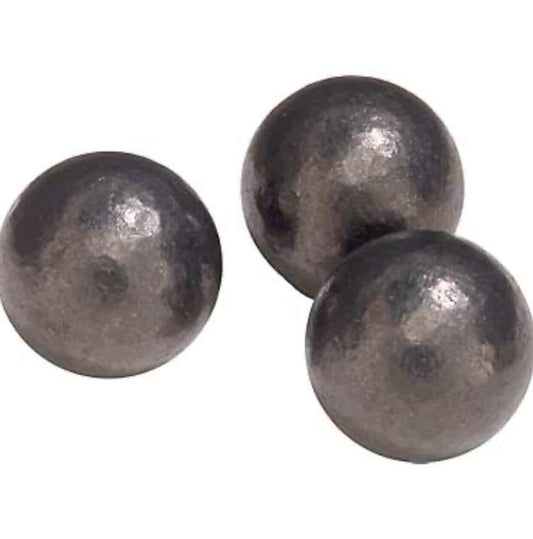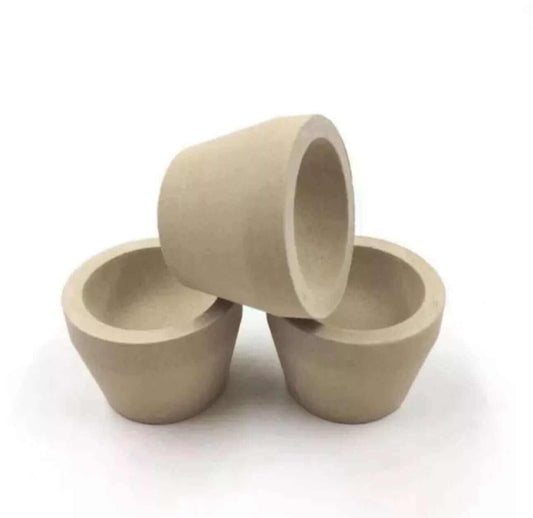Collection: Cupellation Supplies

PRESIDENTGOLD offers top notch and trusted cupels used in assaying precious metals from their base elements such as (Iron, Copper, Lead, Mercury, Tin). We offer a wide array of Magnesia Oxide or Bone Ash cupel(s) in various shaped and sized containers.
Cupellation uses the cupels porosity to absorb base metal oxides, but not precious metals. Using an oxidizing atmosphere, base metals are oxidized and are absorbed into the cupel. Since precious metals do not oxidize, they are not absorbed and are left on top of the cupel for weighing or further analysis.
The lead button for cupellation is typically generated in the crucible fusion from the fire assay process, but can also be produced by a scorification assay, or a bullion assay where lead is placed in with the precious metals.
History:
The cupellation method is an ancient metallurgical process that dates back to the 3rd and 4th millennium in ancient Mesopotamia. Geographically, the Arabian Peninsula includes modern day countries such as: Bahrain, Kuwait, Oman, Qatar, Saudi Arabia, the United Arab Emirates and Yemen, as well as southern Iraq and Jordan.
It is unknown where cupellation was first used for analysis. Theophilus Divers Ars, published in the 12th century AD, is among the first recorded mentions of cupels. Up to the 16th century, not much changed in the procedure.
Disclaimer:
Typical cupellation furnace temperatures in gold and silver assays are 1650-1700°F, but can vary with technique, air flow volume, and cupel material.

-
#14 4-3/8” Mabor Magnesia Tapered Cupel Sets | Gold Silver Refining & Assaying
Vendor:PRESIDENTGOLDRegular price From $22.95 USDRegular priceUnit price / per$25.95 USDSale price From $22.95 USDSale -
#10 2-3/8” Mabor Magnesia Tapered Cupel Sets | Gold Silver Refining & Assaying
Vendor:PRESIDENTGOLDRegular price From $38.95 USDRegular priceUnit price / per$42.95 USDSale price From $38.95 USDSale -
#8 1-3/4” Mabor Magnesia Tapered Cupel Sets | Gold Silver Refining & Assaying
Vendor:PRESIDENTGOLDRegular price From $32.95 USDRegular priceUnit price / per$42.95 USDSale price From $32.95 USDSale -
#7A 1-9/16” Mabor Magnesia Tapered Cupel Sets | Gold Silver Refining & Assaying
Vendor:PRESIDENTGOLDRegular price From $30.95 USDRegular priceUnit price / per$42.95 USDSale price From $30.95 USDSale -


Cupellation Lead [Pb] 99% High Purity .600” Diameter Spheres | Precious Metal Assaying & Analysis
Vendor:PRESIDENTGOLDRegular price From $28.95 USDRegular priceUnit price / per$225.00 USDSale price From $28.95 USDSale -
#6 1-7/16” Mabor Magnesia Tapered Cupel Sets | Gold Silver Refining & Assaying
Vendor:PRESIDENTGOLDRegular price From $30.95 USDRegular priceUnit price / per$42.95 USDSale price From $30.95 USDSale








